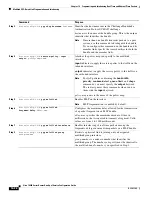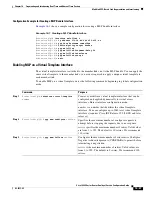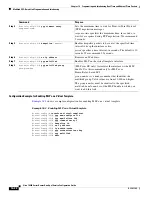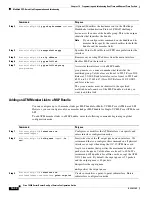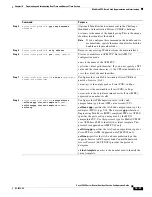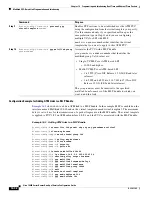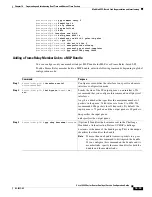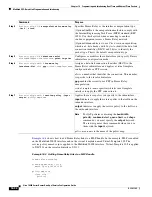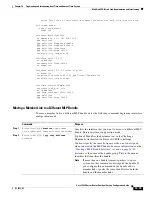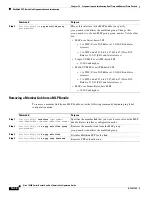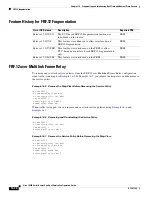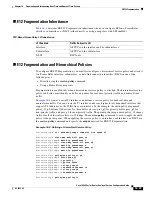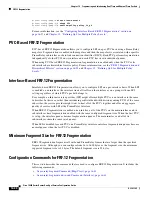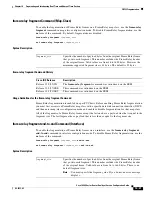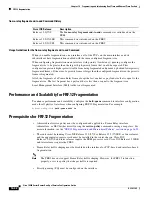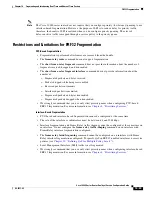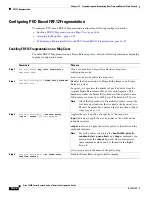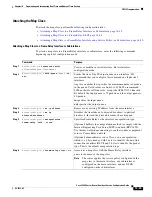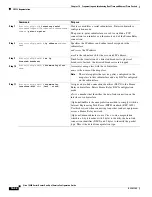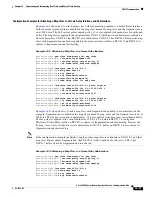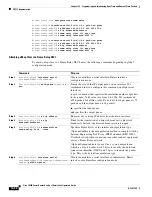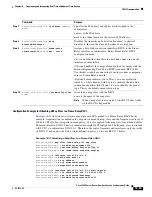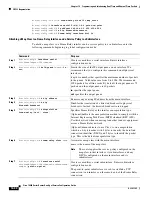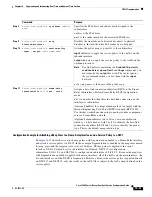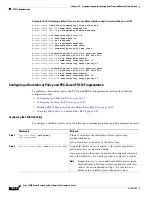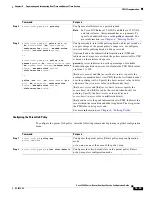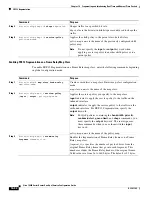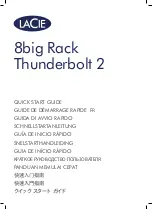
16-40
Cisco 10000 Series Router Quality of Service Configuration Guide
OL-7433-09
Chapter 16 Fragmenting and Interleaving Real-Time and Nonreal-Time Packets
FRF.12 Fragmentation
Router(config-pmap)#
class class-default
Router(config-pmap-c)#
shape 256
Router(config-pmap-c)#
service-policy policy_12_p0
For more information, see the
“Configuring Interface-Based FRF.12 Fragmentation” section on
page 16-57
and
Chapter 13, “Defining QoS for Multiple Policy Levels.”
PVC-Based FRF.12 Fragmentation
PVC-based FRF.12 Fragmentation allows you to configure LFI on a per-PVC basis using a Frame Relay
map class. Fragmentation is enabled in the map class and then the map class is associated with a specific
Frame Relay subinterface or data-link connection identifier (DLCI). Each PVC performs fragmentation
independently of other PVCs on its interface and each PVC has its own individual queues.
When using PVC-based FRF.12 Fragmentation, fragmentation is enabled only when the PVC or its
subinterface has a hierarchical service policy. For more information, see the
“FRF.12 Fragmentation and
Hierarchical Policies” section on page 16-39
and
Chapter 13, “Defining QoS for Multiple Policy
Levels.”
Interface-Based FRF.12 Fragmentation
Interface-based FRF.12 Fragmentation allows you to configure LFI on a per-interface basis. When LFI
is enabled on an interface, the interface treats all traffic on the interface as one group with one LFI
setting, regardless of which PVC a packet belongs to.
For example, an Internet service provider (ISP) might offer multiple PVCs on an interface to the same
subscriber. In this case, rather than introducing artificial bandwidth divisions among PVCs of the same
subscriber, the service provider might want to treat all of the PVCs together and offer an aggregate
quality of service with LFI at the Frame Relay interface.
When FRF.12 Fragmentation is enabled on an interface, all of the PVCs on the main interface and its
subinterfaces have fragmentation enabled with the same configured fragment size. When the first PVC
is set up, the interface queues become fragmentation queues. The main interface and all of its
subinterfaces share the same set of queues.
When LFI is disabled for each PVC on a Frame Relay interface, interface fragmentation queues become
normal queues when the last PVC is disabled.
Minimum Fragment Size for FRF.12 Fragmentation
FRF.12 Fragmentation fragments all outbound Frame Relay frames that are larger than the specified
fragment size. Although you can configure from 16 to 1600 bytes as the fragment size, the minimum
supported fragment size is 44 bytes. The default fragment size is 53 bytes.
Configuration Commands for FRF.12 Fragmentation
This section describes the commands that are used to configure FRF.12 Fragmentation. It includes the
following commands:
•
frame-relay fragment Command (Map-Class), page 16-41
•
frame-relay fragment end-to-end Command (Interface), page 16-41

